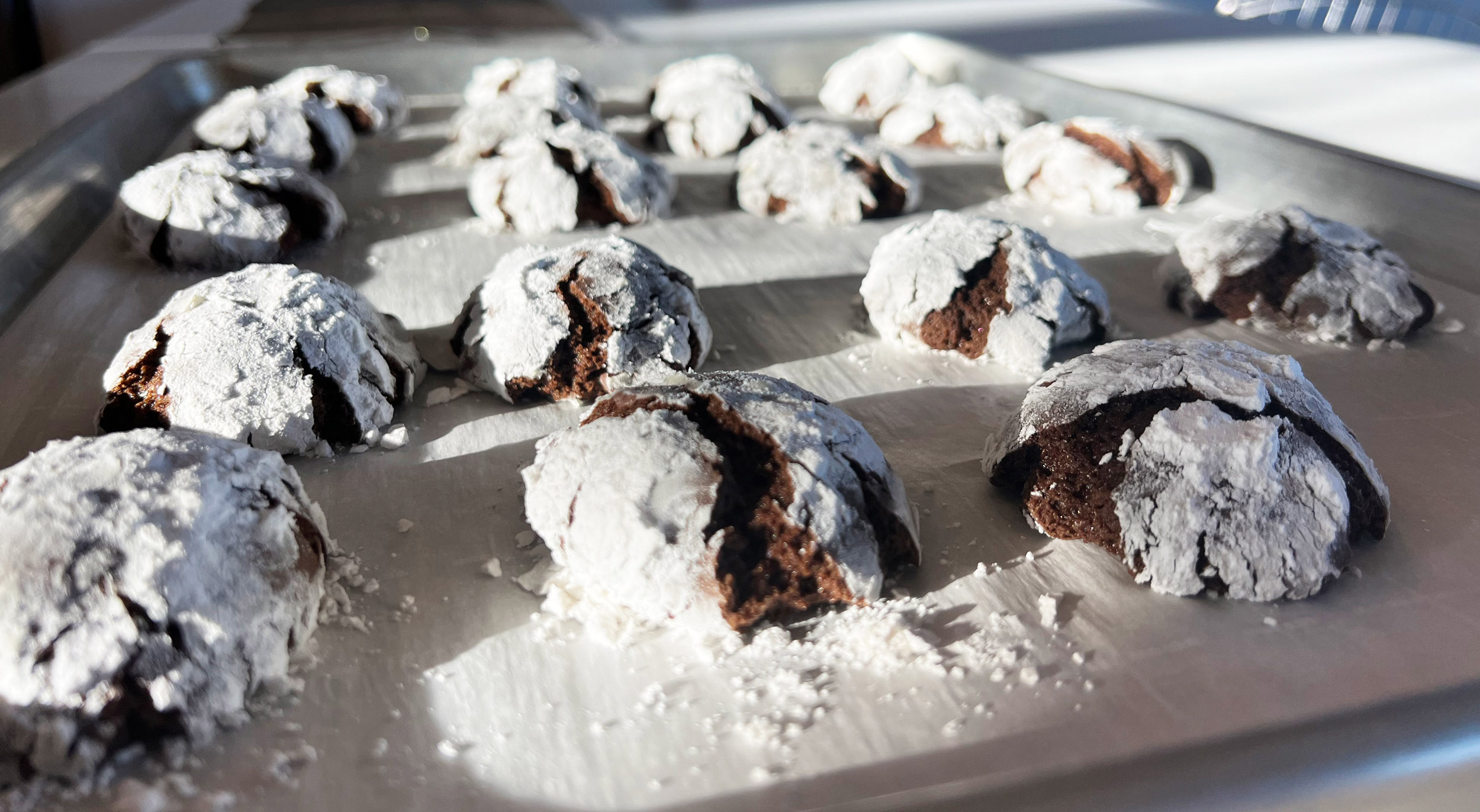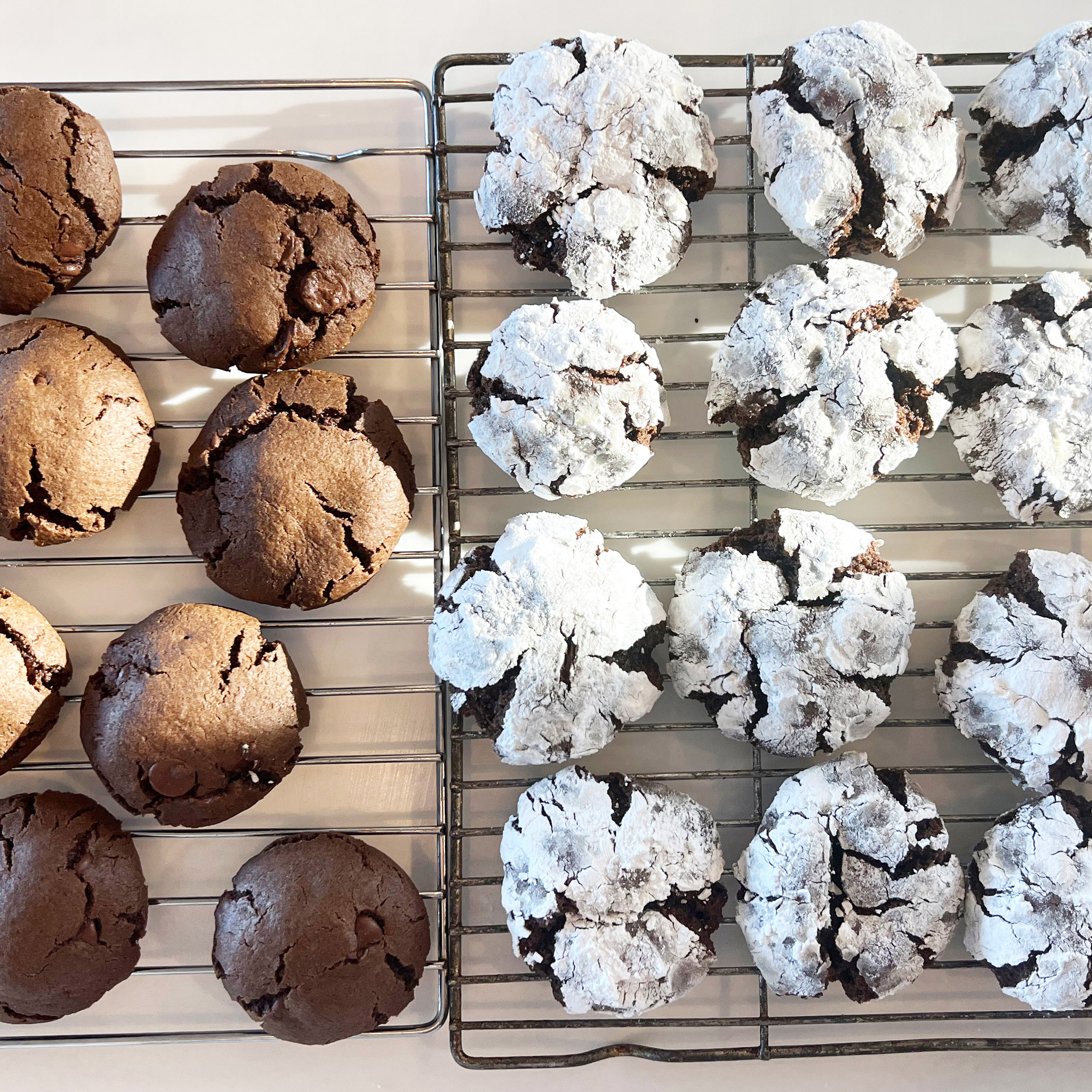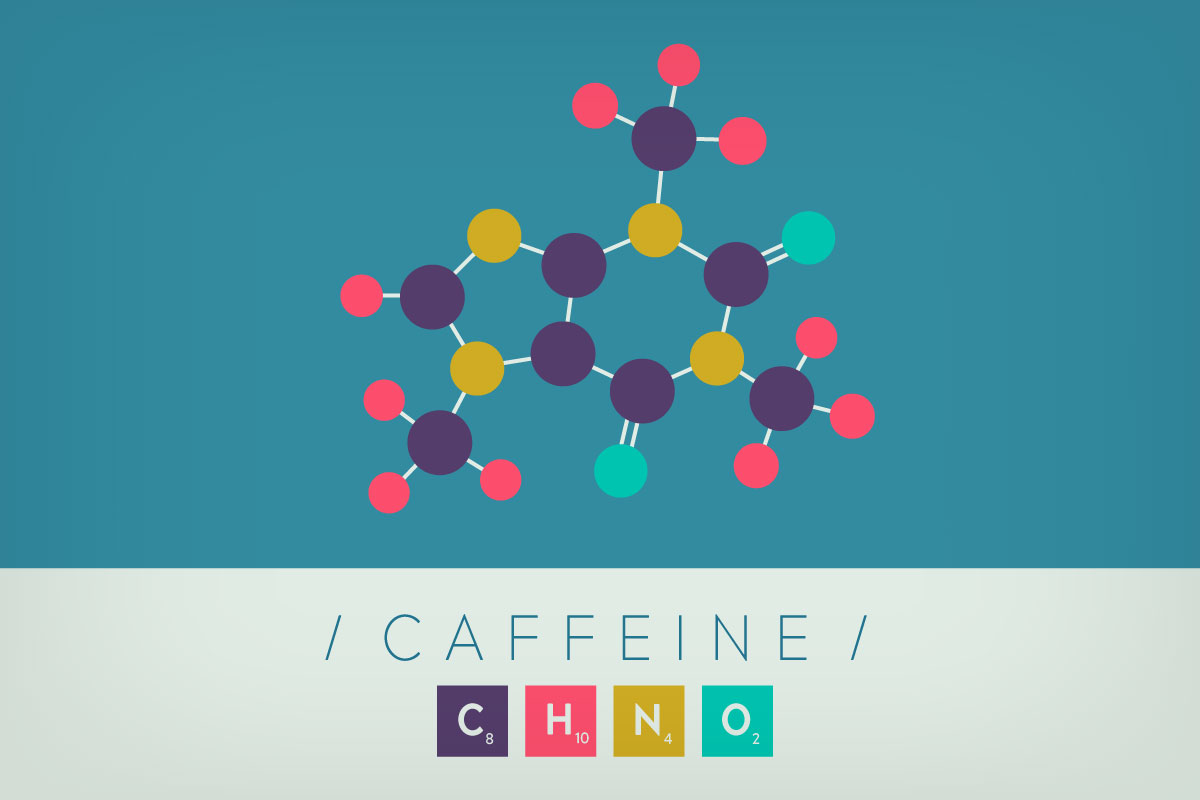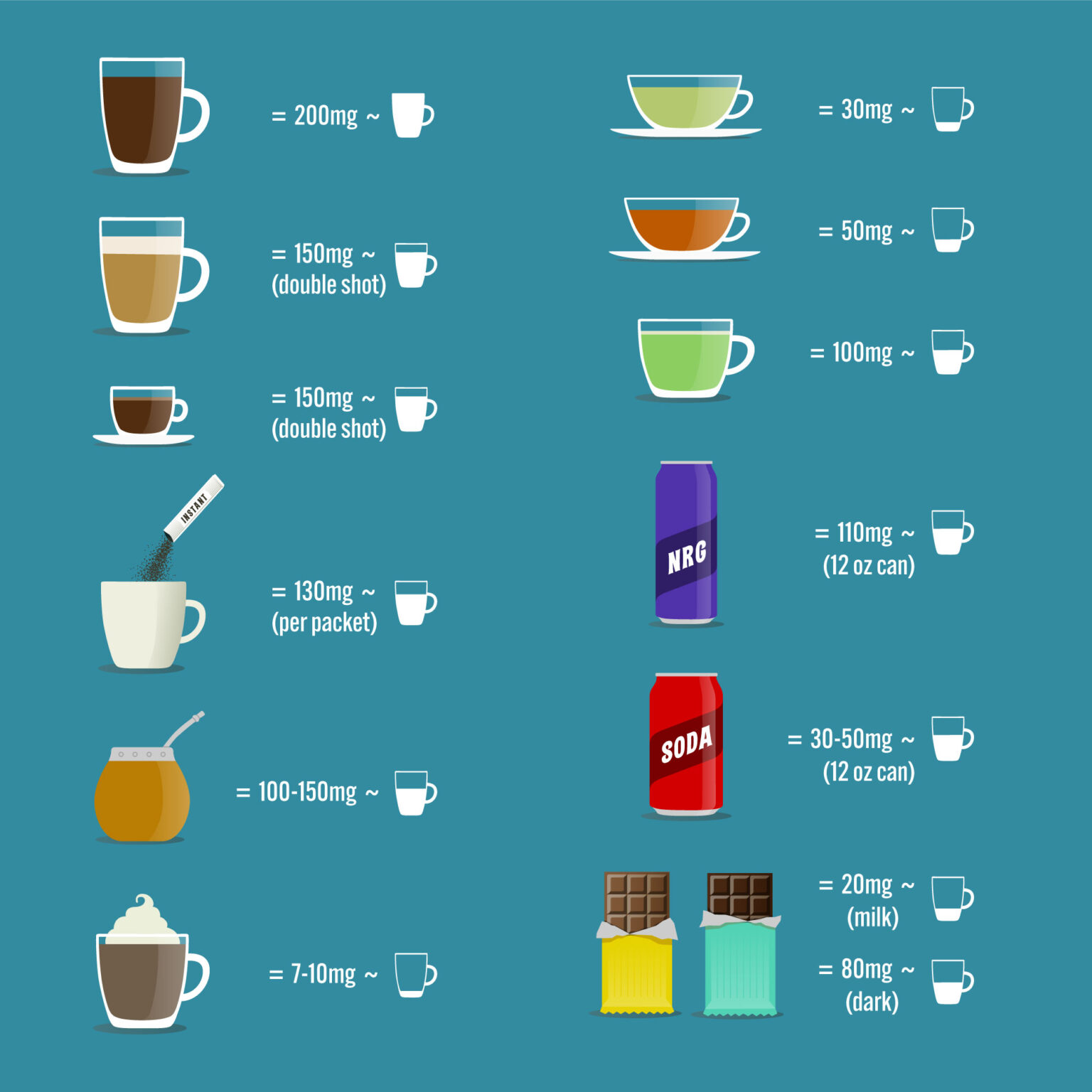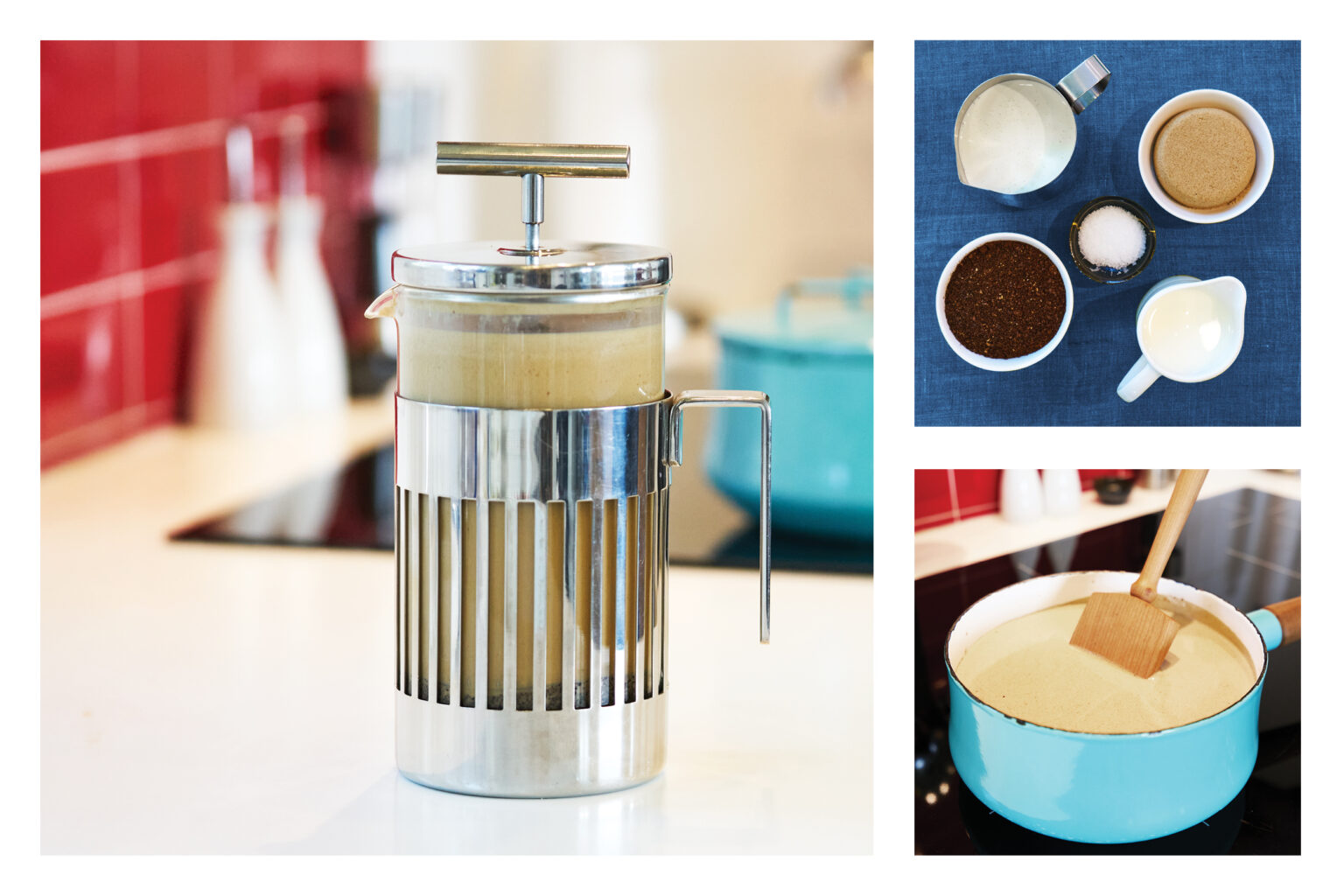If you open my sister’s freezer, there will be two neatly labeled tupperware. One says espresso, the other cayenne. Each is filled with deep brown, near-perfect spheres of dough, ready to bake off at a moment’s notice. That level of pre-planning and organization makes me wonder whether she’s adopted. She also somehow has the self-control not eat them all on day one which makes me convinced she’s an altogether different species. But when there’s a party or a BBQ, she’s ready and shows up with two plates stacked with cookies and each plate is neatly labeled espresso and cayenne – HOT.
We’re offering three iterations here. They all use the same base recipe that’s very rich and quite forgiving as long as you chill the dough. The espresso version is (of course) our favorite. We use one packet of Alpine Start’s powdered instant coffee, but any instant coffee or espresso works. 3/4 of a teaspoon of cayenne give them a nice bit of heat without overdoing it and goes great with Mexican food or a summer cookout. For the holidays we go peppermint extract and roll them in powdered sugar. They’re festively delicious and they look stunning, like little glaciers of deliciousness. See variations below.
Cream together butter, sugars and vanilla until light and fluffy. Add eggs one at time. In a separate bowl, mix and sift together dry ingredients. Sifting makes sure there aren’t leavening clumps and gets the cocoa distributed evenly. Add dry ingredients to butter/sugar mixture in two additions. As with all cookies and confections, be sure not to over-mix as that will activate the gluten in the flour and resulting in small, sad bricks instead of cookies. Stir in chocolate chips. Chill dough at least 2 hours before baking.
Preheat oven to 375ºF. Form dough balls around an inch in diameter or slightly larger for bigger cookies and space them about 2″ apart on a parchment paper-lined sheet pan. Bake for 9-11 minutes. Cool on a wire rack. For fun, test your self-control against Lara’s (knowing you will lose).
10 tbls (1 ¼ sticks) unsalted butter or veggie shortening, softened 1 c light brown sugar, packed
1 c sugar
2 eggs
1 tsp vanilla extract
— — —
2 ½ c all-purpose flour
¾ c unsweetened cocoa powder
1 tbls instant espresso powder for Espresso (see variations below)
1 tsp baking soda
1 tsp baking powder
1 tsp salt
12 oz (1 ½ cups) semisweet chocolate chips
Pro tips:
- Frozen dough is good for several months in a well-sealed container and you can go from freezer to oven directly. Reduce heat to 350º and cook for 12 minutes (depending on your oven). Bonus points if you make two kinds and neatly label them. Make Lara proud.
- For the powdered sugar version (you can do this with any flavor, but it’s especially well-suited to peppermint) cover the balls with a heavy coat of powdered sugar before baking. Really go heavy to where the sugar is falling off the ball—otherwise the cookies end up with a thin grey coating of sugar (not festive) and the beautiful contrast with the deep chocolate valleys is lost.
Variations:
- Cayenne: Add ¾ tsp ground cayenne pepper instead of espresso powder. You can add more or less to suit, but this much offers good heat without causing permanent psychological damage any unsuspecting child who downs a handful.
- Peppermint: Simply swap 1 tsp peppermint extract for the vanilla. We bring them to every holiday party and they’re a hit.
–

